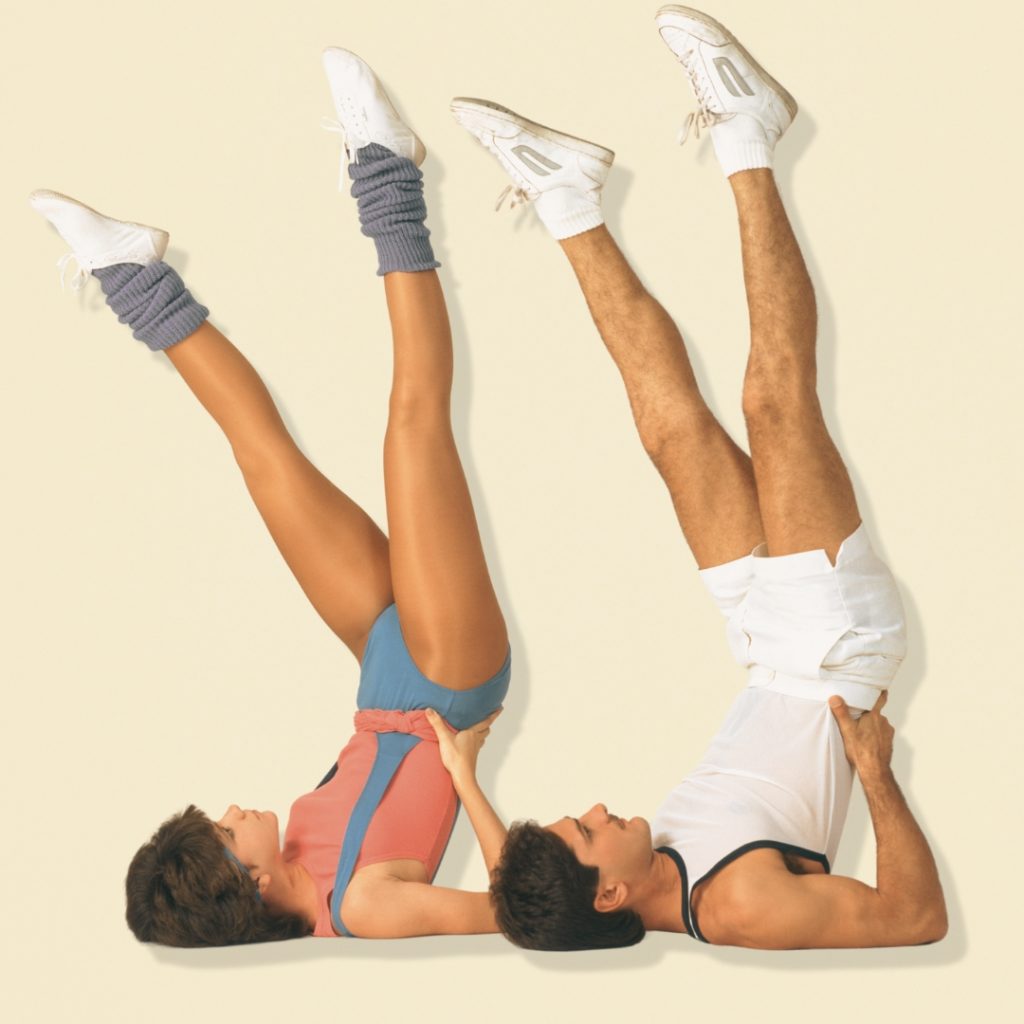The sweat leaking from my forehead is so intense my eyes sting. My body has that delicious buzz of endorphins zipping through it and my limbs are fully awake, even though it’s only 7am. I flop back onto my mat, letting my spine sink into the foam, and feel relieved that my exercise for the day is done. Whilst it might sound like I’ve just completed an hour-long Barry’s Bootcamp class… that couldn’t be further from the truth. I am on my living room floor, and only woke up 15 minutes ago.
Ten minutes can pass in the blink of an eye or feel like a hideously long time depending on what you’re doing. And on that particular Monday morning, I had just nailed a HIIT (High Intensity Interval Training) routine via YouTube, ahead of jumping in the shower and heading to the train station.
But is exercise even worth doing if it’s only for a ten-minute blast? After all, that’s not even long enough to watch an episode of Friends, or enough time to oven heat an instant lasagne. Yet, the craze for fitness microdosing (read: super speedy workouts, whenever you can, instead of long gym sessions) seems to be steadily growing, as our lives become increasingly busier. The search interest on terms related to ‘10-minute workout’? That’s only increasing too.
As someone who is time-pressed but relishes fitness when I can fit it in, I decided to overhaul my normal routine and prioritise mini workouts for a fortnight to see if it was the answer to squeezing more fitness into my jam-packed schedule.
A Little Goes a Long Way
Like many, my relationship with working out is ever-changing along with my schedule. Typically, I play an hour of tennis a week, try to get my 10,000 steps in every day and do two hour-long strength training sessions in the gym—three if I can. Combined, this nicely ensures I’m meeting the NHS’ weekly recommendation of (at least) 150 minutes of low to moderate pace exercise (60-70 percent of your maximum heart rate) or 75 minutes of vigorous (where your heartrate reaches between 70-90 percent of your maximum). But sometimes, well, life just gets in the way, doesn’t it? If I’m being honest, there are plenty of weeks that I only manage the one gym visit—on the day I’ve arranged to meet my PT and have some accountability.
But busyness aside—and feel free to call me a cynic here—on numerous occasions, I’ve skipped working out when I’ve had 30- or 45-minutes spare, thinking ‘Oh, that’s not long enough. It doesn’t count, so there’s no point!’ but actually, a little can add up to a lot, explains Alasdair Nicoll, a personal trainer and expert tutor at The Fitness Group.
“Fitness microdosing has become increasing popular over the past few years,” he details. “It involves helping those with busy lifestyles integrate short bursts of exercise into their schedule whilst not compromising their overall goal.” Given that my overall goal is longevity, having good cardiovascular health and building strength, it’s hard to see how any form of extra activity would be detrimental in achieving that—a ten-minute burst, or otherwise.
As for how prescribed fitness microdosing needs to be, the expert says it’s entirely up to you, such is the beauty of chunking up a workout into something more manageable. “The time you complete a workout in doesn’t need to be super specific, it simply needs to work for your lifestyle,” Nicoll says. “It could be ten minutes on your lunch break, 15 minutes in the evening while watching your favourite TV show, or first thing in the morning before your daily commute. Ten minutes of exercise every day is 100 percent beneficial in comparison to none.”
He adds, “If your goal is to lose weight, 10 minutes of exercise each day would likely not have a huge impact on weight loss, as there are other important factors to be considered such as diet. However, if building muscle is the goal, if you have adequate equipment and resistance then it may have some impact.”
After deciding I want to nail down (at least) that elusive second gym session every week, and to make more of any free time that does arise, especially in the mornings, I set about fitness microdosing. If I could do a ten-minute burst of movement six days a week, that’d soon add up to a full hour…
So, what’s the best thing to do in that timeframe for maximum efficiency and results?
How to Get Into Fitness Microdosing
“Fitness microdosing could be classed as a 10-minute interval run, kettlebell workout or even dancing,” Nicoll advises, when asked what ‘counts’. “Anything which gets the heartrate elevated could technically be classed under the fitness microdosing umbrella.” He adds that you could go a gentler route too, weaving in five minutes of morning and evening stretching to “maintain and increase the natural range of motion of your muscles, which will aid in reducing risk of injury as well as helping with day-to-day functionality”.
After kicking off my Monday with the aforementioned brutal HIIT session, on Tuesday I felt stiff and realised I might need to add a bit of warming up and cooling down into the next round—meaning, I ended up spending double the time on my exercise mat. Still, twenty minutes planking, crunching and squatting in my living room before breakfast felt very manageable vs walking all the way to the gym and back, plus the actual pumping of iron in between. It also meant that throughout the rest of the day, I didn’t have to deal with that niggling voice in the back of my head telling me I ought to be exercising, even when I was exhausted from a hectic day.
As well as carving out deliberate time to fitness microdose, Nicoll says it’s great to pepper in little extra opportunities for movement as and when you can, too. “Instead of taking the lift or escalator, opt for the stairs to increase your overall activity and your heartrate,” he recommends, as well as taking a short walk, doing some stretches, squats or lunges (even just in those few minutes whilst waiting for the kettle to boil). “This will all add up over time and can help to increase your step count.”
"It’s great to pepper in little extra opportunities for movement as and when you can"
On the Wednesday, my alarm went off and instead of springing out of bed to tick off my mini workout, I bashed my phone screen back into silence and told myself that day could be a rest day—after all, I did double the time the day before. Right? But by lunchtime in the office, the guilt of ‘not doing enough’ (why, oh why, do I always feel that?) started to fizz away in the background. So, like any normal person, I locked myself in a toilet cubicle and did five minutes of squats. Lord knows what anyone waiting outside would have thought I was up to, but I returned to my desk feeling more energised having moved, and happy to have added another five minutes to my tally.
By the time Thursday rolled around, it was a sunny one and I decide to do a ten-minute sprint around the block (total additional fitness time thanks to microdosing: 45-minutes, cha-ching!). On Friday I spent an hour with my PT lifting weights and by the end of the weekend, I’d done an hour of tennis too… but trailed off with my exercise microdosing. Still, I’m pleased with how easy it felt to add to my total just through doing little and often alongside a full 60-minutes when I had the time.
The following week, I kept the routine spicy by doing ten minutes of yoga before bed (on days where I felt sleep would serve me better than getting into my Lycra) and on a couple of mornings, whacked on a vibey playlist to dance around my kitchen as my toast cooked. Again, it all adds up and meant I more than hit my weekly exercise target and contributed to my goals of boosting my heart health (slut-dropping = fabulous cardio), and feeling generally healthier overall.
Fitness microdosing, it’d seem, is the perfect way of reminding yourself of what you can achieve when you’re pressed for time, and breaking up the day with little extra pockets of movement is a surefire winner when it comes to feeling energised and like you’ve achieved something. Thank God, it doesn’t have to be a thigh-quivering HIIT routine every time.



